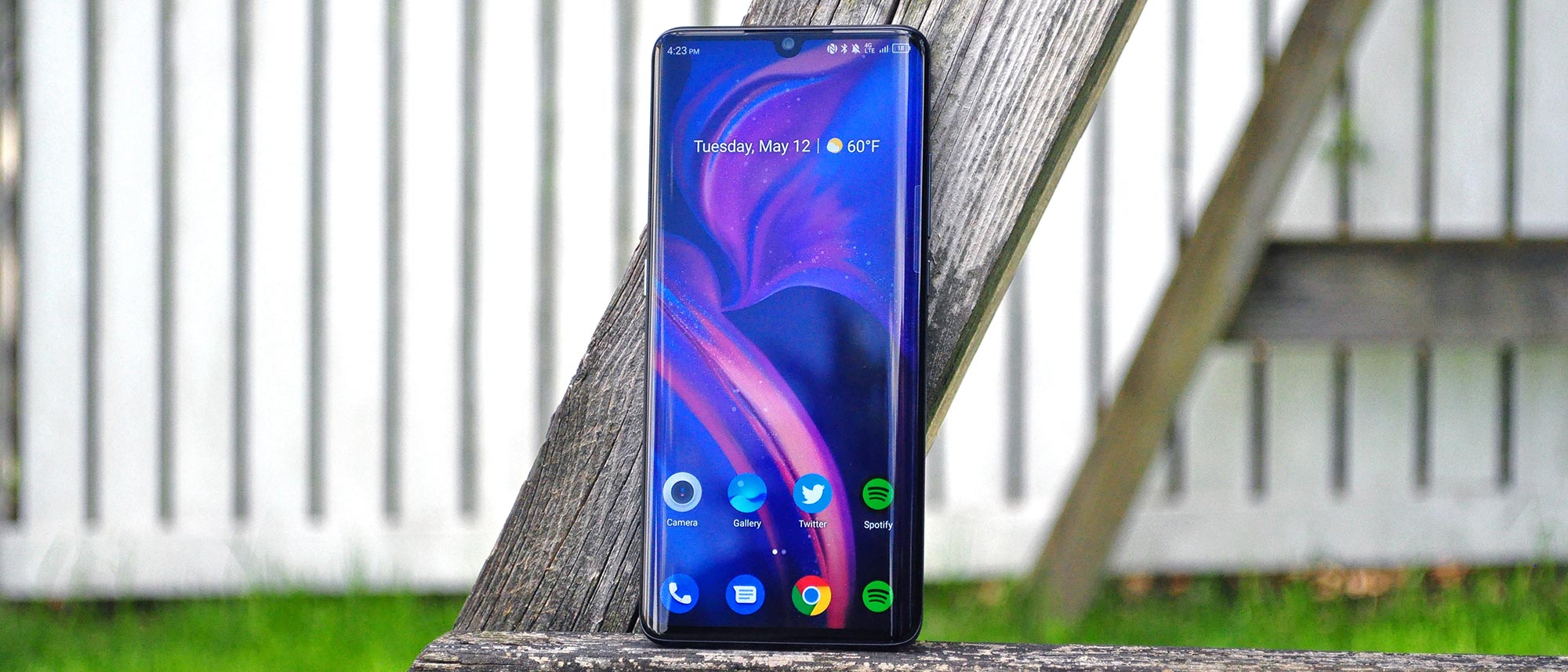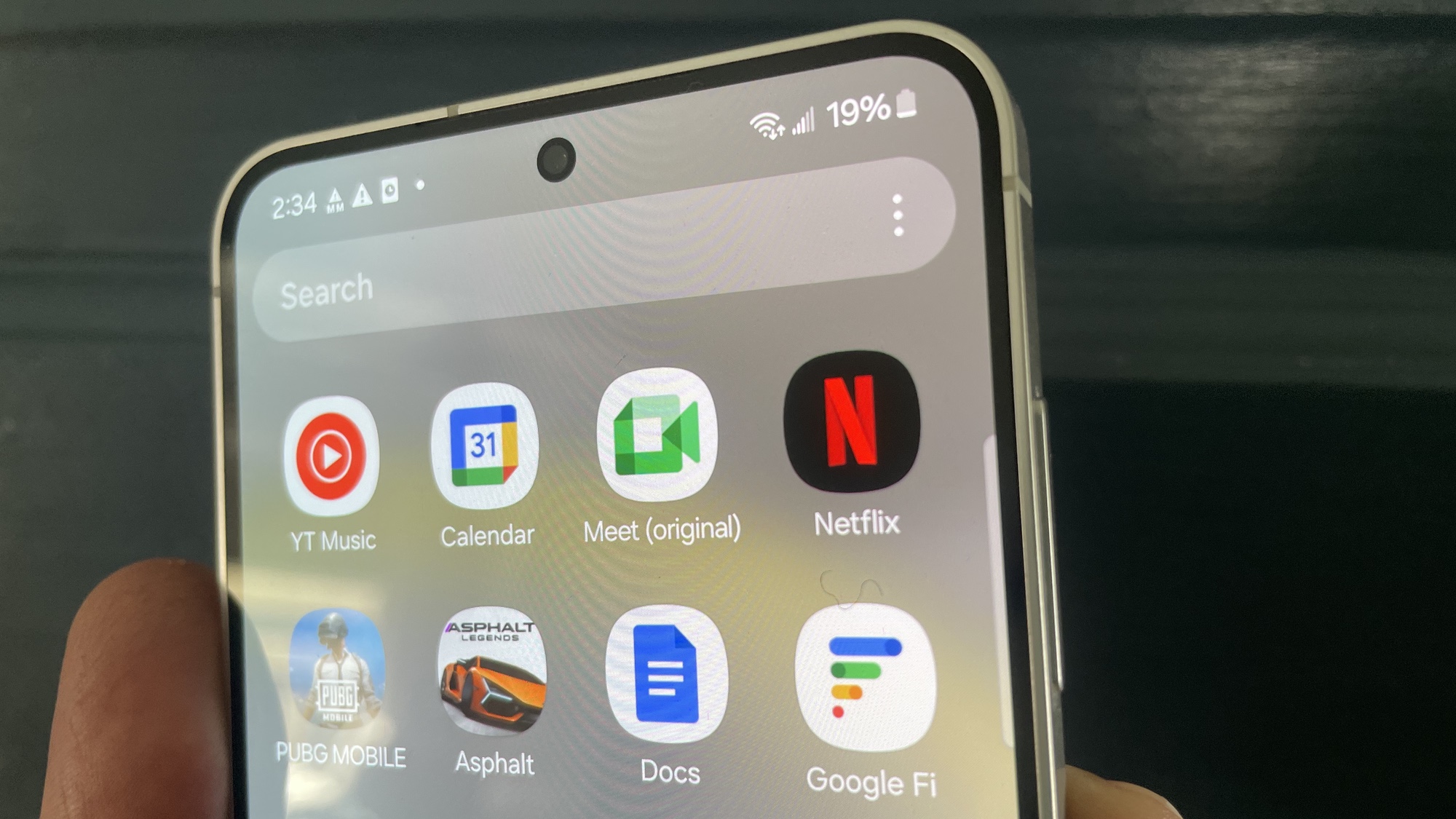Tom's Guide Verdict
The TCL 10 Pro offers almost everything you could want in a $450 phone, including a stellar design, long battery life and a gorgeous display. However, the camera performance could be better.
Pros
- +
Great overall performance
- +
Impressive OLED display
- +
128GB storage
- +
Premium design
- +
Strong battery life
Cons
- -
Cameras are hit-or-miss
- -
Gaming performance not the best
- -
Limited to GSM carriers
Why you can trust Tom's Guide
Price: $449
OS: Android 10 with TCL UI
Display: 6.47-inch AMOLED (2340x1080)
CPU: Snapdragon 675
RAM: 6GB
Storage: 128GB; expandable up to 256GB
Rear camera: Quad-lens: 64MP wide (ƒ/1.8), 16MP ultrawide (ƒ/2.4), 5MP macro (ƒ/2.2), 2MP low-light (ƒ1.8)
Front camera: 24MP (ƒ/2.2)
Battery: 4,500 mAh
Size: 6.24 x 2.85 x 0.34 inches
Weight: 6.6 ounces
Well-known TV maker TCL has been building phones for years — just not ones with its name on the back. That’s changing, starting with the $449 TCL 10 Pro.
The 10 Pro isn’t the only new phone from TCL; there’s also the $249 TCL 10 L and, sometime over the summer, a 5G variant will emerge for less than $500. But this Pro model is still the range-topper in many ways, as it’s the only one of the trio with an OLED display, and it sports the most stunning design of the bunch.
Our TCL 10 Pro review reveals a phone that marks a strong debut for TCL in the ever-competitive arena of midrange handsets that’s been dominated by Google and Apple as of late. While the TCL 10 Pro isn’t perfect, it’s still among the best cheap phones you can buy, and a compelling choice for anyone on the hunt for a premium design, flagship-caliber display and long battery life for under $500 — so long as you don’t mind the average cameras.
TCL 10 Pro review: Price and release date
The TCL 10 Pro reached stores May 19 for $449 unlocked, and it comes in only one configuration and color — 128GB of storage with 6GB of RAM, in the Ember Gray shade. TCL offers the 10 Pro in other, more interesting colors elsewhere in the world, but unfortunately gray is all on offer in the U.S.
There’s a microSD slot in the TCL 10 Pro, and it accepts cards up to 256GB in size. Best Buy, Walmart and Amazon sell the phone, and you’ll be able to take it to GSM carriers, like AT&T, T-Mobile and Metro. Unfortunately, the lack of CDMA bands means that the 10 Pro doesn’t fully support carriers like Verizon, Sprint and Boost Mobile.
In Canada, the TCL 10 Pro is offered at Bell for $700 CAD and Telus for $665 CAD. Canadians can also get a free 43-inch TCL TV (a $319 CAD value) with the purchase of a TCL 10 Pro; all you have to do is go to TCL's website to register your purchase and get in on the deal.
TCL 10 Pro review: Design
While the TCL 10 Pro technically qualifies as a midrange handset, TCL doesn’t sell a phone that’s more expensive, and so this $449 phone actually serves as something of a flagship for the brand.
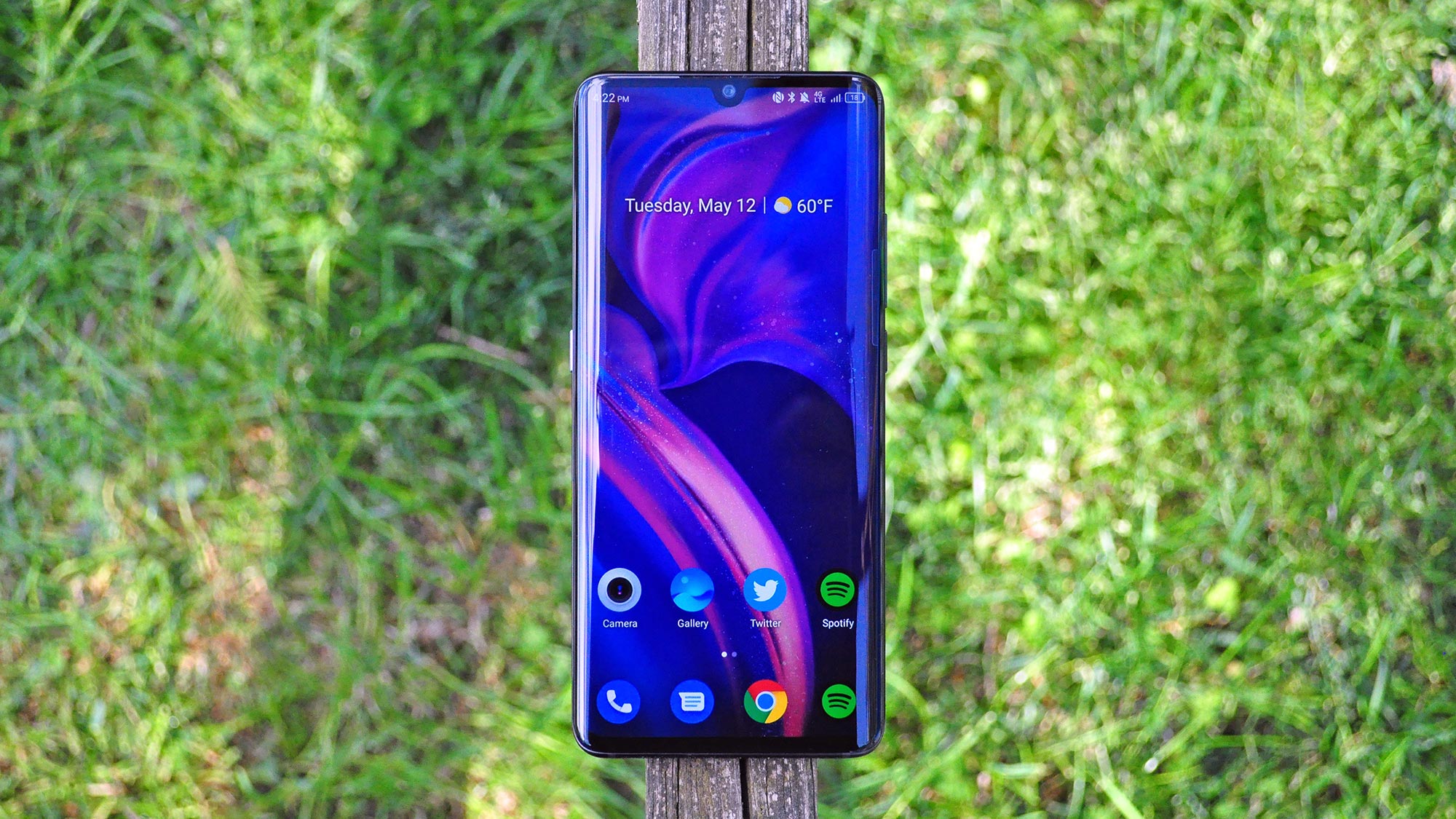
Thankfully, the TCL 10 Pro looks like a flagship, too. We’re used to seeing concessions in design and build quality at this price point: The Pixel 3a and Samsung Galaxy A51 are made from polycarbonate, rather than metal and glass, while the new iPhone SE 2020 repurposes a very, very old design that likely doesn’t cost Apple much to keep pumping out these days.
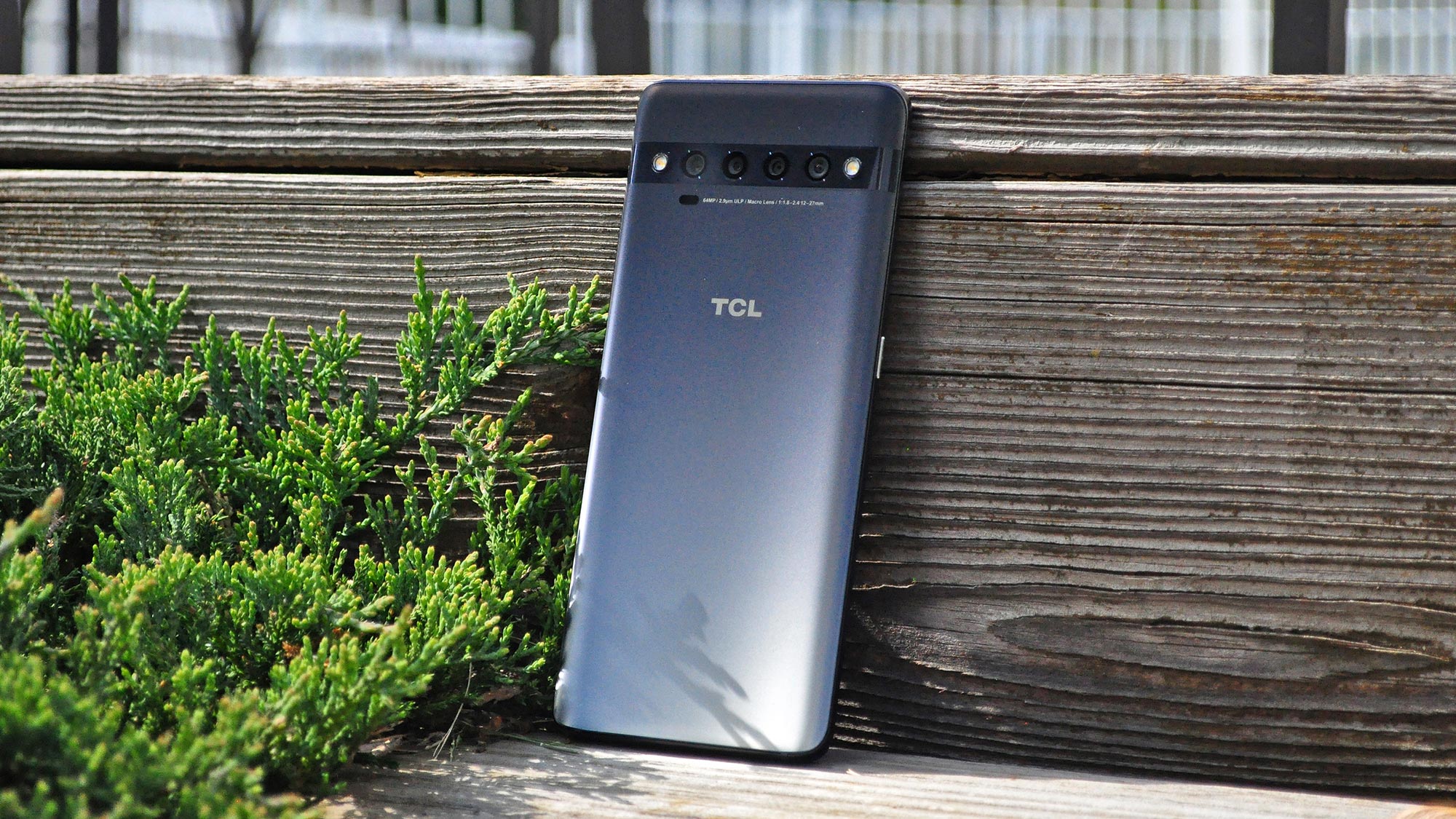
The TCL 10 Pro, however, isn’t molded from plastic at all. Instead, it sports a solid, powder-coated metal chassis with a satiny, matte-etched glass back that looks and feels similar to what OnePlus employs on some of its products. Couple those materials with the 10 Pro’s full-screen design, and suddenly, TCL has a design winner on its hands.
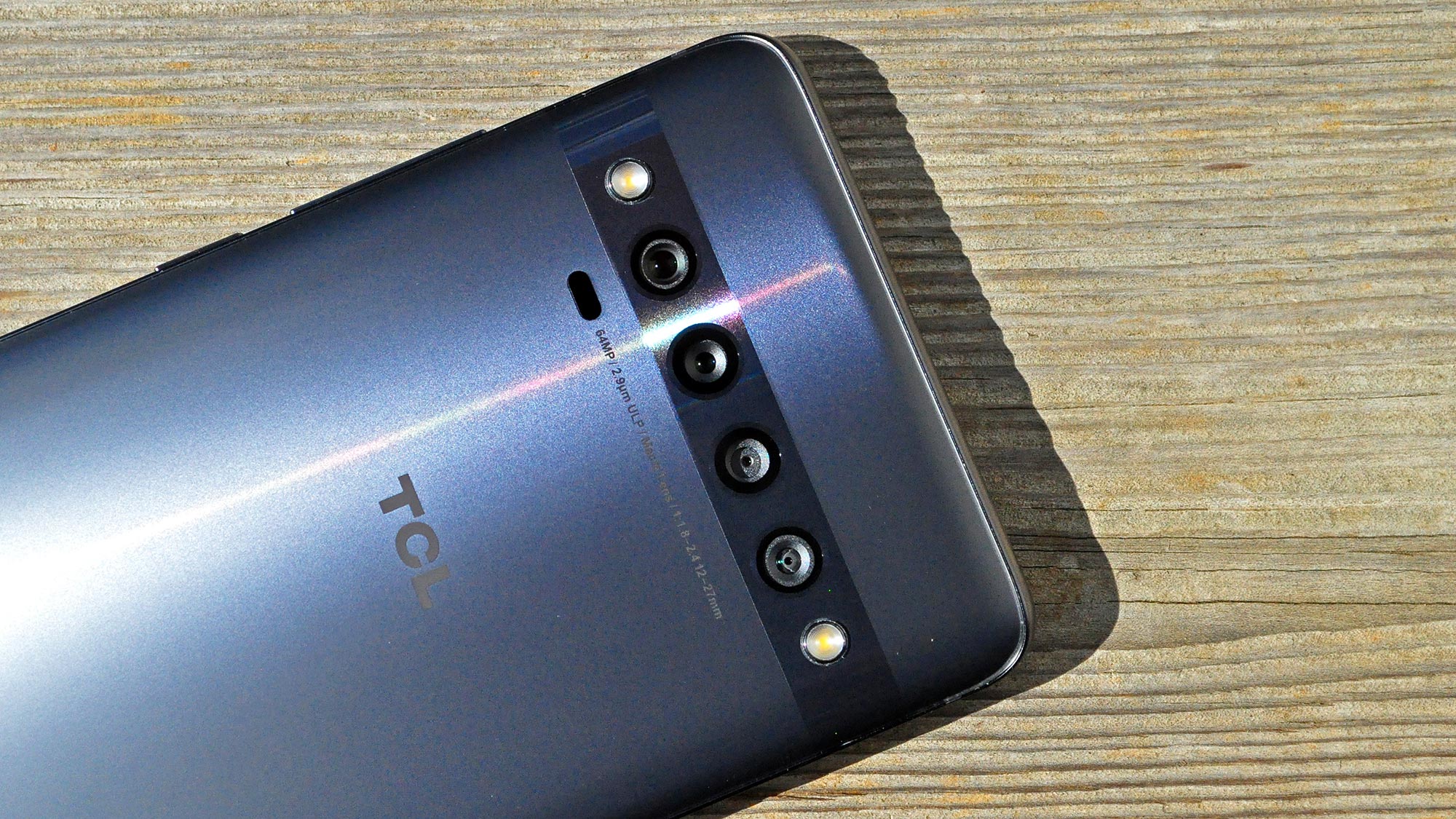
In fact, I’d go so far as to say that this isn’t just one of the best-designed phones under $500 — it is the best. I especially love the way the quad cameras and dual-LED flash have been lined up horizontally around the back, in a glossy strip that breaks up the frosted texture blanketing the rest of the sheet of glass. The 10 Pro would be an attractive $800 phone, but at its actual $449 price, it feels truly special.
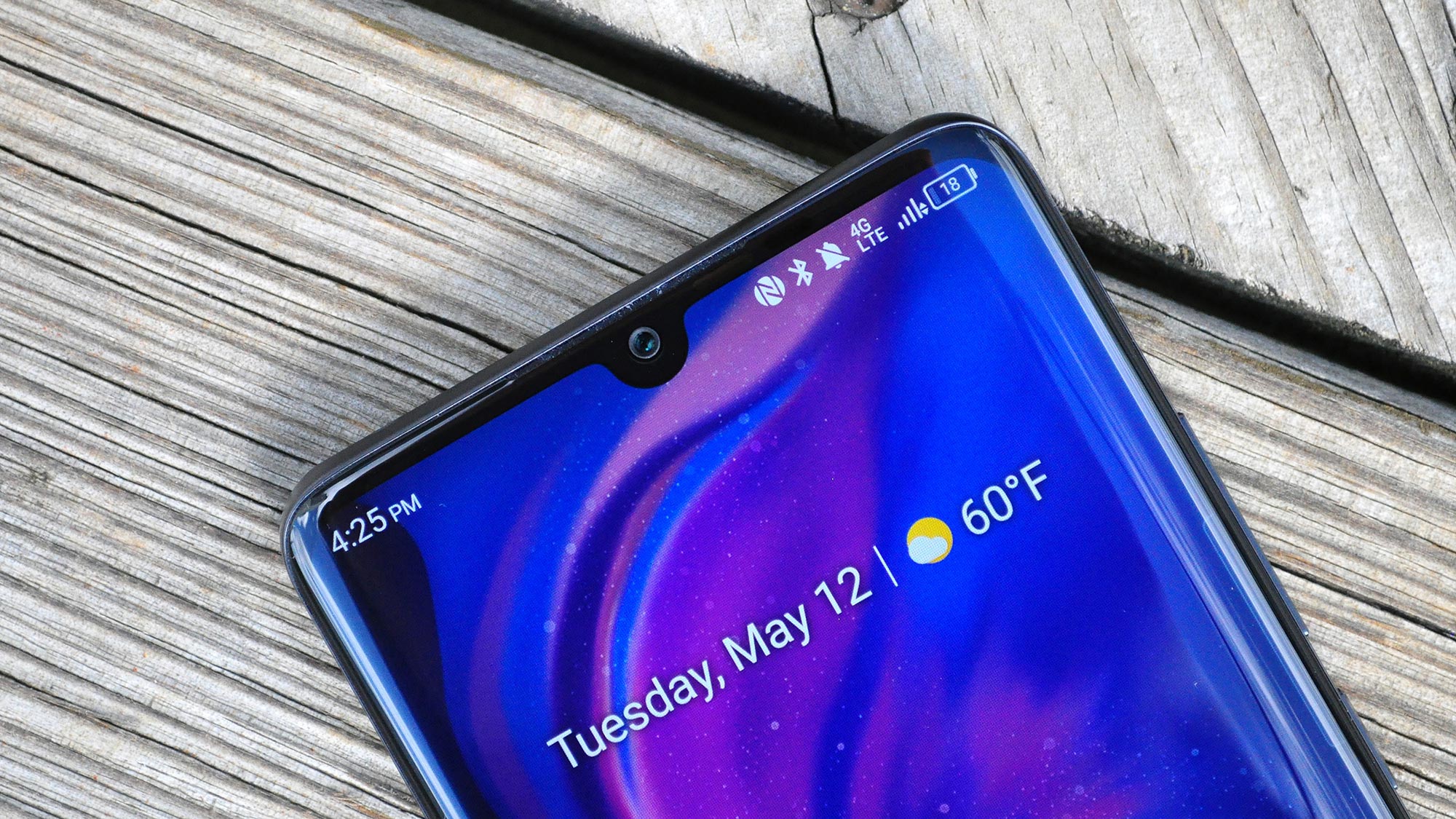
Mind you, it’s not perfect. The 10 Pro’s display is steeply curved on its sides and that can lead to some unintentional touches, which gets pretty annoying. There’s only one speaker on this phone, and it’s on the bottom right, meaning sound can get easily muffled as you’re playing games. There’s also no IP-rated water resistance or wireless charging on board here, though those aren’t surprising omissions in this segment.
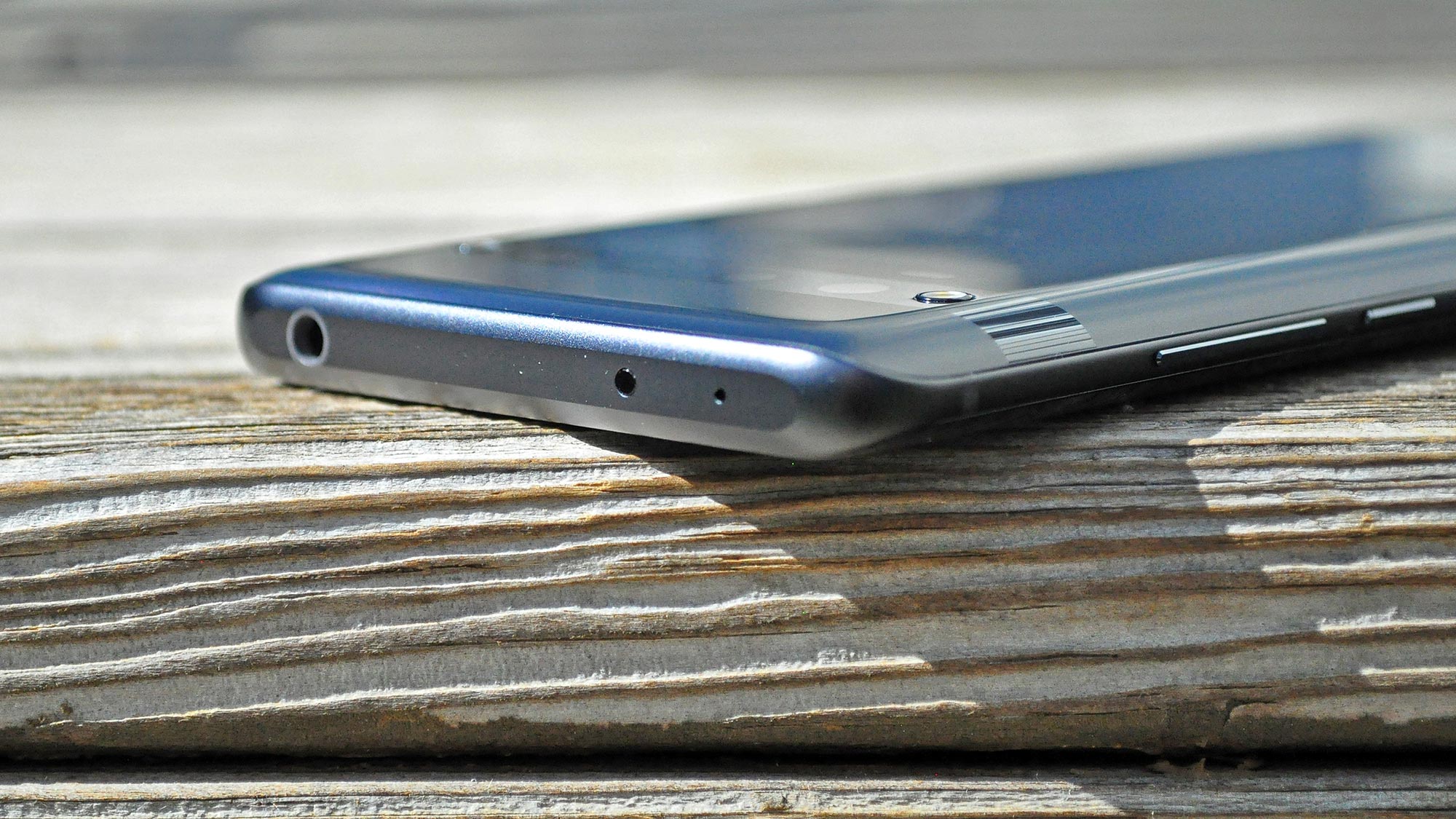
There are still a couple more positives worth noting, however. The first is the 10 Pro’s headphone jack, which resides on the upper top edge and means you won’t have to ditch those trusty old wired earbuds for an expensive wireless pair.
The second is the in-display optical fingerprint sensor, which isn’t the fastest scanner in the world, but quick enough and, more importantly, pretty accurate. In fact, I’ve experienced less false negatives with the 10 Pro’s sensor than the one inside the Galaxy A51, especially when attempting to unlock the TCL 10 Pro after washing and drying my hands. TCL’s system is even quite good at reading your prints when the phone is lying flat on a table, which I find to be a challenge with most optical scanners.
TCL 10 Pro review: Display
Front and center on the TCL 10 Pro, you’ll find the phone’s 6.47-inch Nxtvision AMOLED display, which packs a full-HD resolution and HDR 10 certification. Nxtvision is TCL’s branding for its proprietary display engine, which is borrowed from the company’s own television panels.
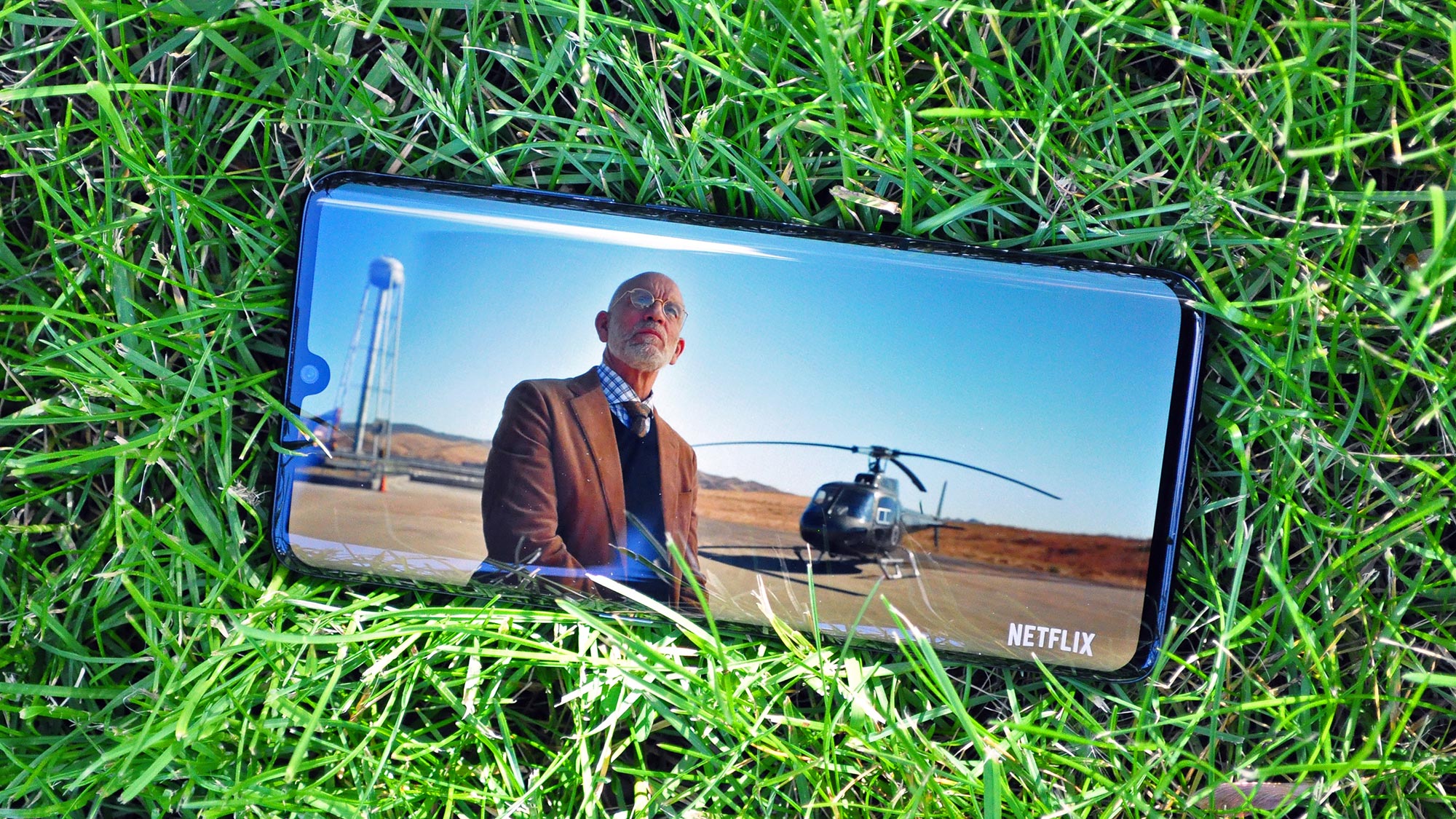
However, Nxtvision is more than a behind-the-scenes technology — it’s also an app inside the 10 Pro that allows you to tune the appearance of the panel to your liking. When Nxtvision visual enhancement is on, contrast and colors are adjusted in real time to take advantage of the screen’s wide color gamut. A separate SDR-to-HDR option allows you to get non-HDR content up to spec, though to my eyes, this setting doesn’t make a world of difference. Occasionally it amounts to a slight-but-appreciated saturation boost, while other times it adds a little too much punch to intentionally-dim or muted scenes.
Of course, you can turn all this off if you like to, and opt for a middle-of-the-road Standard color profile or an even more toned-down Gentle option that appears to be emulating sRGB with no flashy effects. I preferred the Standard look personally, and under that guise I was impressed as I watched the trailer for Netflix’s Space Force, taken in by the view of a rocket perched and ready for launch below an endless silvery-blue desert sky.
On Standard mode, the TCL 10 Pro covered 172.3% of the sRGB color space. That translates to noticeably more vibrant colors than the 111.2% iPhone SE, which utilizes an LCD panel. However, the iPhone’s hues were more realistic, as Apple’s phone notched a Delta-E score of 0.20 compared to the TCL’s 0.28 (numbers closer to zero are better).
All that’s well and good, and if that were the end of the display conversation, I’d rather have the TCL’s panel, as it’s rare to find an OLED screen this good for such a low price. But for all TCL’s Nxtvision bells and whistles, the 10 Pro’s display comes up short in one very important respect: brightness. Whereas the iPhone SE can be cranked all the way up to 625 nits, this handset tops out at 398 nits, making outdoor viewing a little more difficult than it should be.
TCL 10 Pro review: Camera
TCL says the display was primarily the focus for its first series of phones, though, judging by the quantity of lenses on the back of the TCL 10 Pro, it hasn’t skimped on cameras, either.
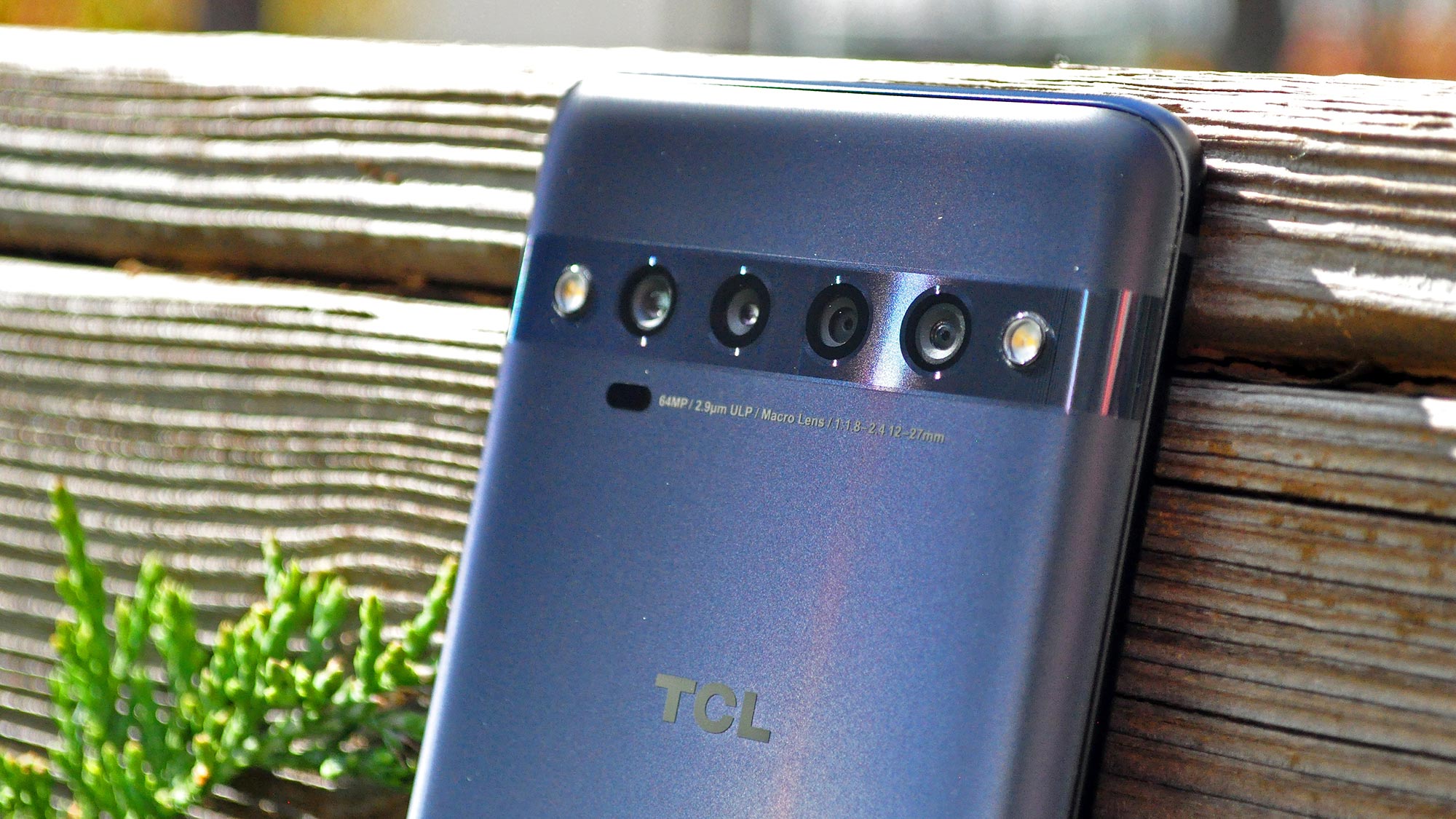
The quad-lens camera system on offer here combines a 64-megapixel primary wide-angle shooter with a 16-MP ultrawide one, a 5-MP macro camera and a 2-MP sensor devoted to low-light shots. The front of the TCL 10 Pro features a 24-MP camera which, it must be said, is more megapixels than you typically get for selfies.
Photos captured with the 10 Pro’s 64-MP main lens incorporate quad-pixel binning to allow more light to reach the sensor, so the result is 12-MP regardless. That equals the iPhone SE’s resolution, and thus, this pair of shots of a mandevilla flower from both phones are similarly sharp. However, there’s a massive gap in color and detail; the hues on the TCL phone are boosted into the stratosphere, such that the texture of the petals and leaves are totally absent. Imperfections that are noticeable on the iPhone SE’s take are curiously absent in the 10 Pros’ rendition, as they’ve been smoothed over with excessive blur.
What makes this particular comparison worse is that you’re seeing an example of the kinds of photos the TCL 10 Pro delivers when its AI scene detection engine is off. When that feature is on, the colors are even more ridiculous, with a degree of eye-searing oversaturation I’ve rarely seen from a smartphone camera, even at this low price. These photos were taken on a sunny day, and the flower is naturally vibrant; it definitely didn’t need any post processing to enhance those colors, and yet, TCL’s software went that far anyway.
Thankfully, things begin to settle down when you compare the 10 Pro’s 16-MP ultrawide lens to the 12-MP one in Samsung’s Galaxy A51. There’s something about the extreme contrast of the A51’s shot that draws your eye in, but it’s false. TCL’s camera picked up the actual lighting of the scene, teasing more lavender out of the flowers on the crape myrtle tree to the right, while nailing the gradient of whites and grays composing the clouds overhead. The 10 Pro’s image also isn’t quite as noisy in the shadowy regions, like right below the roof of the house.
Macro cameras are becoming increasingly more common, especially in cheaper phones. The TCL 10 Pro features a 5-MP sensor just for those shots, similar to the Galaxy A51. The A51’s macro lens is one of the few impressive standout features about its camera array, but I prefer shooting with the TCL 10 Pro’s macro, both because it proved quicker to focus in testing and because it allows you to get closer.
In capturing this wind chime, notice how the ring around the marble is ever so slightly out of focus in the Galaxy’s shot, yet is rendered crisply by TCL’s phone. I also prefer the way the 10 Pro lit the background, with better dynamic range that properly captured the off-white siding of the house.
The TCL 10 Pro also has a mode for shooting in low-light conditions, called Super Night Mode, and above you can see how it compares to Google's implementation of Night Sight in the Pixel 4. Now, this isn’t a totally fair comparison; the Pixel 4 is, of course, a legitimate flagship, rather than a midranger like the TCL 10 Pro. That said, I didn’t have a Pixel 3a on hand when conducting this TCL 10 Pro review, and besides, sometimes it’s good to see precisely what you’re missing when opting for a cheaper phone over a pricier one.
Unsurprisingly, the Pixel 4’s attempt is better across the board; it’s sharper, it’s brighter and it manages to nail all the details, even the door lock in the lower-right corner of the frame. That said, Google’s software bathes everything in a warm light, which is one particular pitfall the 10 Pro’s Super Night Mode doesn’t suffer. It’s rare to see a compelling low-light setting on a budget device — well, aside from the Pixel 3a — and this is a particular area where TCL’s made sacrifices, even despite this handset’s dedicated lens for dim scenarios.
Finally, we see how the 10 Pro’s selfie lens compares to the iPhone SE’s 7-MP front-facing shooter. Once again, even though the sensor in TCL’s camera starts with more pixels, it’s binning them together so that rather than 24-MP shots, you end up with a 6-MP product. That may explain why the TCL’s rendition isn’t quite as sharp as the iPhone’s, but there are various other ways in which the 10 Pro falls behind here. Half my face is blown out; my beard and hair are blurry; and for some reason, the phone made no attempt to correct for the sky above, resulting in white-hot clouds that ruin the result.
The TCL 10 Pro’s selfie performance is probably its biggest letdown. In other respects, however, this is a middle-of-the-road midrange mobile camera. It’s certainly not at the level of the iPhone SE or Pixel 3a, but there are also worse options out there for the money, and at least having a plethora of lenses at your disposal offers a bit of versatility Apple’s and Google’s handsets lack.
TCL 10 Pro review: Performance
The TCL 10 Pro comes powered by Qualcomm’s Snapdragon 675 processor — an evolution of the Snapdragon 670 chipset in the Pixel 3a — and 6GB of RAM. That combination makes it one of the most powerful phones under $500 today — well, so long as you ignore the A13 Bionic-powered iPhone SE.
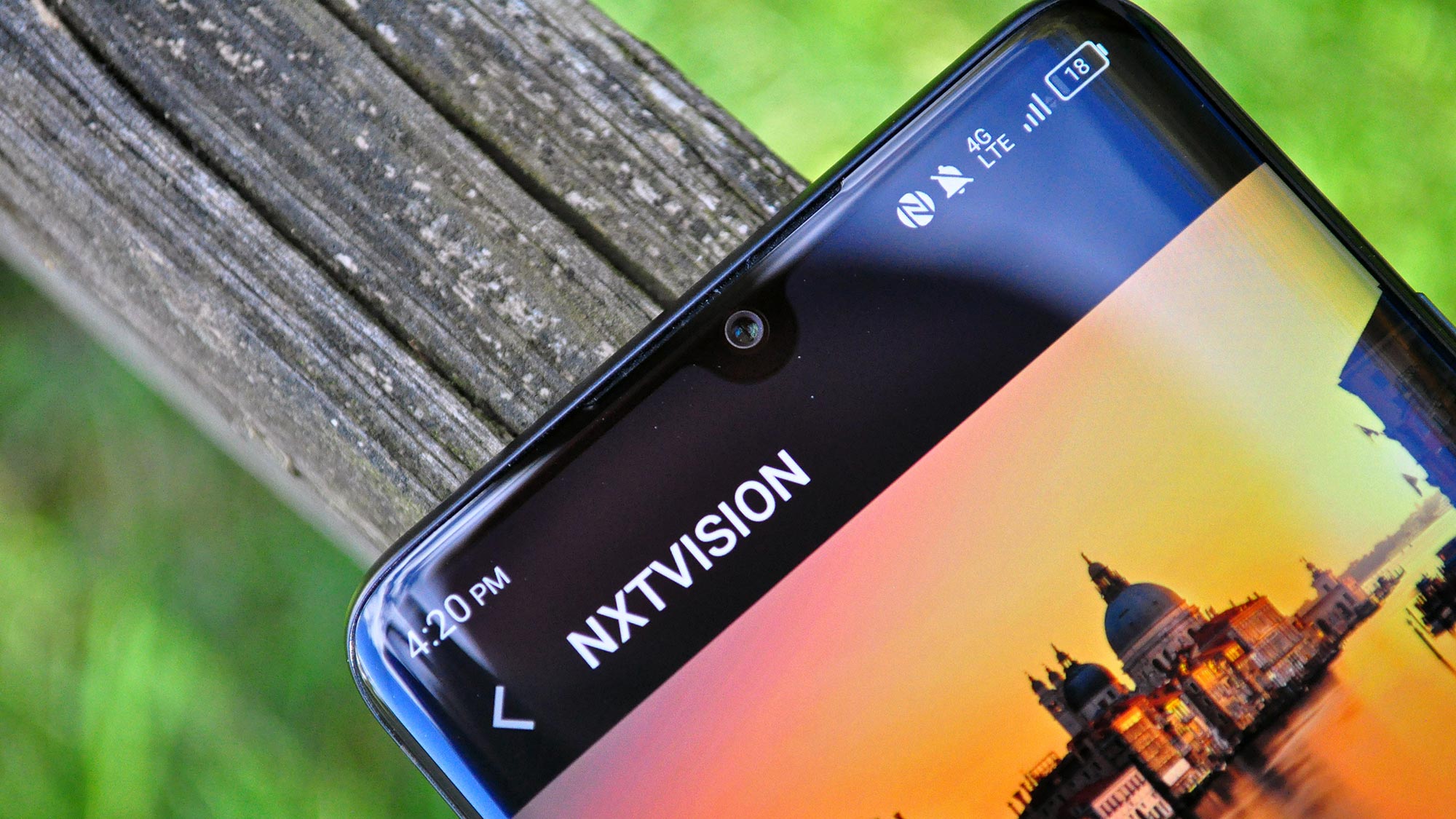
That iPhone is the exception among budget phones, though. And for what you’re paying, the Snapdragon 675 is a capable chip, fast enough to keep Android running as fluidly as it does on Snapdragon 865-powered flagships. You’ll notice some dropped frames and lower-resolution graphics during demanding titles, like Asphalt 9 Legends. Most of the time, though, you’d be hard-pressed to pick out the differences.
Unlike with the Exynos-powered Galaxy A51 I recently reviewed, the TCL 10 Pro opens apps in a snap, even if they’re not already loaded into memory. It boots fast and responds instantaneously to gestures, too. With a multicore Geekbench 5 score of 1,604, the TCL 10 Pro outpaces the Galaxy A51 (1,293), Pixel 3a (1,336) and Moto G Power (1,387), indicating superior system-wide performance.
However, things get interesting when you turn to graphics. The Snapdragon 675 may improve upon the 670 in terms of raw computational ability, but it actually fares worse with polygons, because it packs an Adreno 612 GPU to the older chipset’s Adreno 615. And so, TCL’s device comes up a bit short in the 1080p Vulkan edition of GFXBench’s Aztec Ruins test for midrange devices. Where the Pixel 3a clocked 12 frames per second and 783 frames in total, the 10 Pro manages just 8.5 fps, and 546 frames overall.
The TCL 10 Pro performs well overall, but avid gamers may come away a little disappointed.
Numbers are helpful, but the real question is, do the Adreno 612’s deficiencies make the TCL 10 Pro that much worse to game on compared to similarly-priced handsets? Honestly, I don’t think so.
Samsung’s Galaxy A51 seems to handle Asphalt 9 a bit more smoothly than the TCL 10 Pro does on the whole, but the arcade racer is still certainly playable on TCL’s device, and neither phone can run that game properly at maxed settings anyway. Personally, I think TCL made the right choice in selecting silicon that prioritizes overall performance compared to graphics muscle, but avid gamers may come away a little disappointed.
TCL 10 Pro review: Battery
Inside the TCL 10 Pro is a large 4,500-mAh battery that kept the phone running for an average of 10 hours and 47 minutes in Tom’s Guide’s custom battery test, where devices endlessly load web pages over an LTE network.
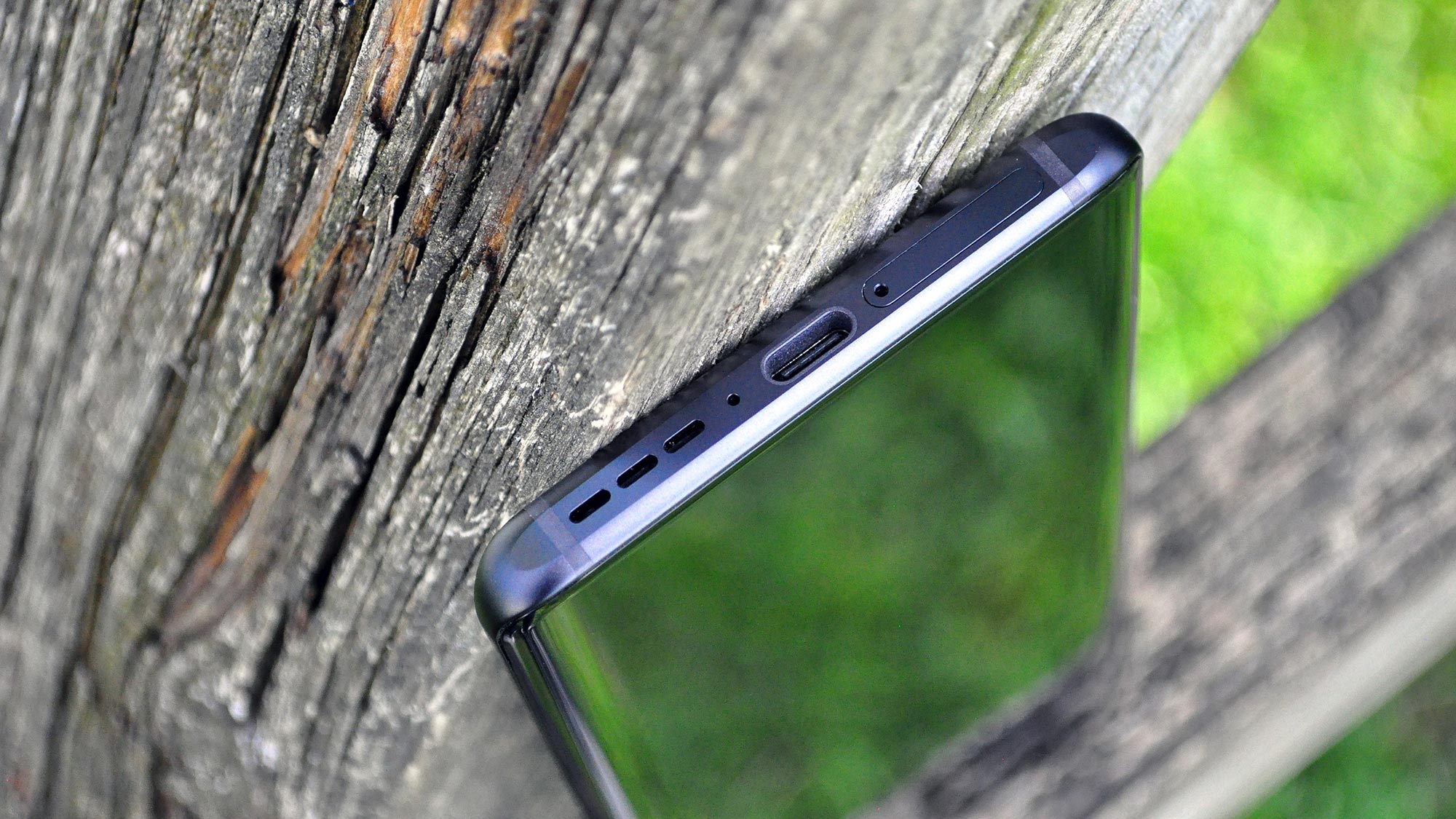
That’s just 13 minutes shy of the 11-hour mark, where you typically find the best phone battery life. The TCL 10 Pro doesn’t quite land on that list, but 10:47 is still very impressive; the Galaxy A51 only made it 9 hours and 16 minutes, despite carrying a similarly-large 4,000-mAh power pack, while the iPhone SE fared just 9 hours and 18 minutes. The 10 Pro’s result is a little more than an hour shorter than the Pixel 3a’s 11:59 runtime, however.
TCL’s device comes with an 18-watt fast charger capable of getting the battery from empty to 50% in 35 minutes. That’s not blistering pace, though it’s better than you typically find in most cheap phones, which make do with 15-watt charging or a solution even slower than that.
TCL 10 Pro review: Software
The TCL 10 Pro marks our introduction to the TCL UI — the company’s front end atop Android 10 that adds some useful functionality, while moving things around a bit.
Like some other manufacturer Android skins, TCL UI has me split. On one hand, it’s not particularly attractive; there’s a lot of oversized text and generic iconography, and TCL’s system apps simply look dated and feel relatively unpolished. There are also a lot of frivolous settings that don’t seem to make a world of difference, like Game Turbo mode, which is supposed to “make the best performance for playing games” but outwardly demonstrates no noticeable change in practice.
But then, TCL UI hatches a few pretty clever ideas — some simple and others more complicated — that add a bit of value rarely seen in this price range. For one, I love that when you press a volume key as media is playing, playback controls appear underneath the volume slider. It’s such an obvious yet thoughtful idea, though I’ve never seen it in any other phone.
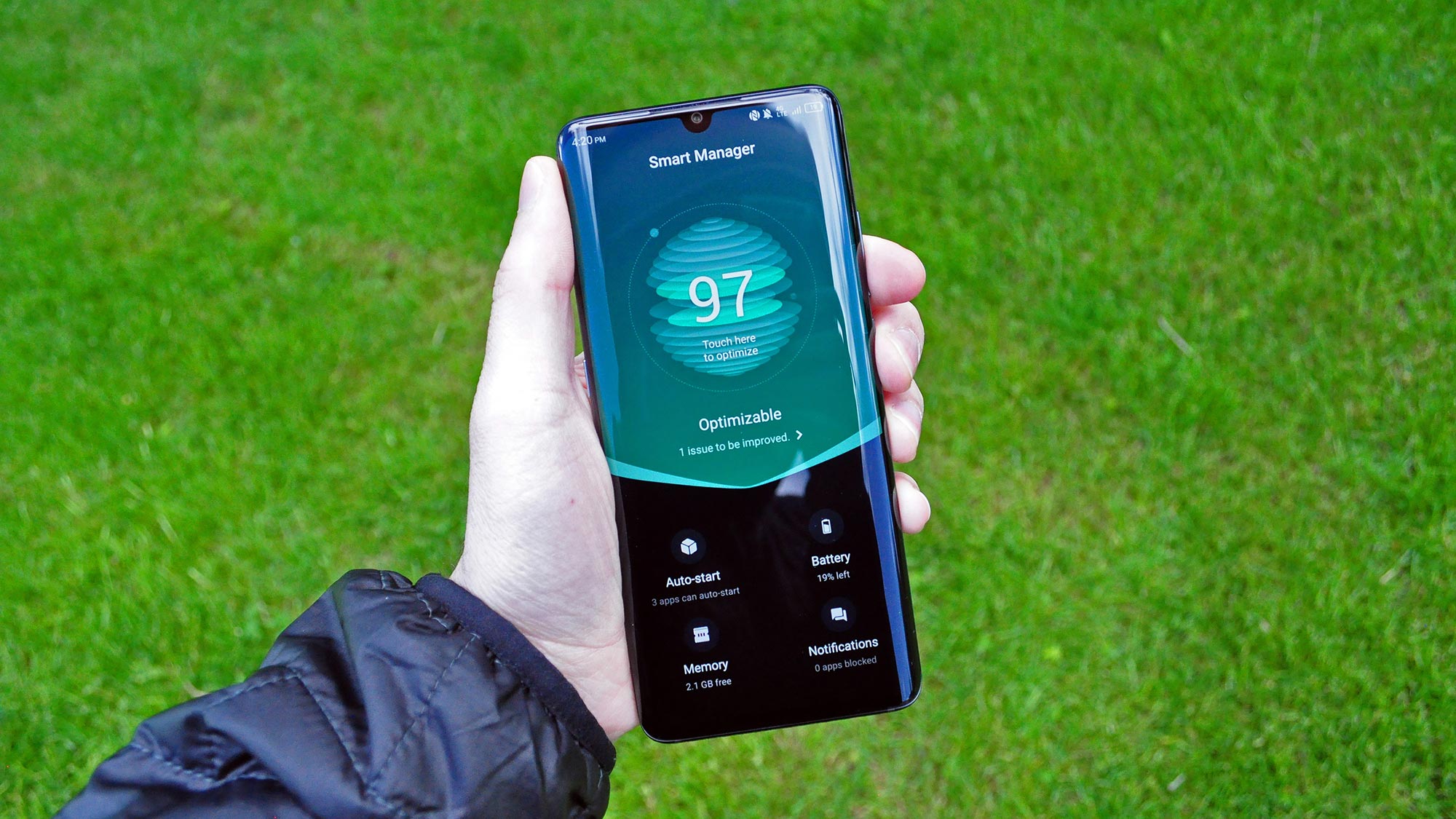
There’s also a programmable Smart Key on the left side of the phone to launch shortcuts or toggle settings, as well as a built-in IR blaster, meaning the TCL 10 Pro can double as your TV remote. The latter is a handy feature I wish more phone makers would bring back.
On the other end of the complexity spectrum is Super Bluetooth — a feature that allows the 10 Pro to play audio concurrently on up to four separate Bluetooth devices. In theory, this feature sounds great, as it saves you from having to daisy chain multiple identical speakers to play music across a large space.
Unfortunately, though, the execution is lacking. No matter how many times I tried, I couldn’t get the audio synchronization setup tool to work properly between my UE Boom and Google Home Mini. Sound still lined up reasonably well most of the time, but occasionally fell out of sync by a beat, or was paused when one of the speakers would drop connection entirely. I applaud TCL’s attempt to improve Bluetooth, but it’s such a frustrating technology to begin with, I’m not surprised the implementation is far from perfect.
TCL promises at least one major Android version upgrade for the 10 Pro, which isn’t encouraging but also, unfortunately, is the status quo for cheap Android phones. Google supports all its Pixel devices with three years of updates, while you can expect even more than that from Apple for the new iPhone SE.
TCL 10 Pro review: Verdict
Out of nowhere, TCL has arrived on the scene with a sub-$500 smartphone that’s actually worth buying.
Sure, the TCL 10 Pro doesn’t have cameras to match those of the iPhone SE or Google’s budget Pixels, and it leaves something to be desired in terms of gaming performance and software. However, this device gets enough of everything else right that it’s at least a better choice for a mid-range Android handset than the Galaxy A51, which is quite an achievement for an up-and-coming brand looking to establish itself against icons like Samsung.
The 10 Pro largely succeeds because of its combination of high-quality design with more satisfying materials than you typically see at this price, alongside strong everyday performance and long battery life. Plus, the 128GB of built-in storage is just icing on the cake in terms of value. It’s as good a debut as a company with everything to prove could have hoped for.
Adam Ismail is a staff writer at Jalopnik and previously worked on Tom's Guide covering smartphones, car tech and gaming. His love for all things mobile began with the original Motorola Droid; since then he’s owned a variety of Android and iOS-powered handsets, refusing to stay loyal to one platform. His work has also appeared on Digital Trends and GTPlanet. When he’s not fiddling with the latest devices, he’s at an indie pop show, recording a podcast or playing Sega Dreamcast.
